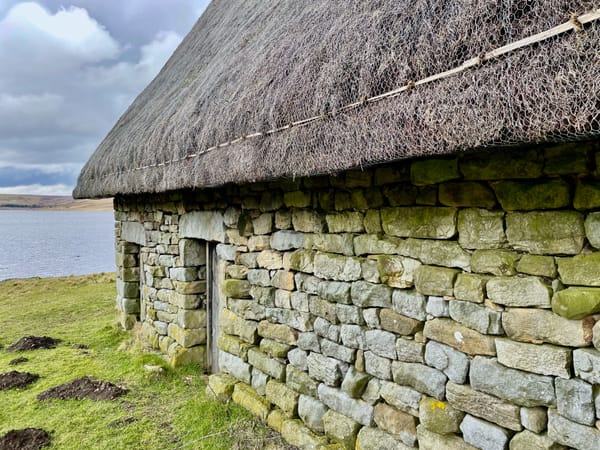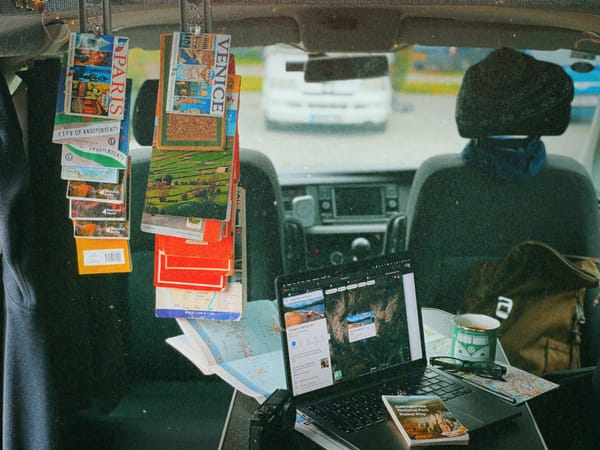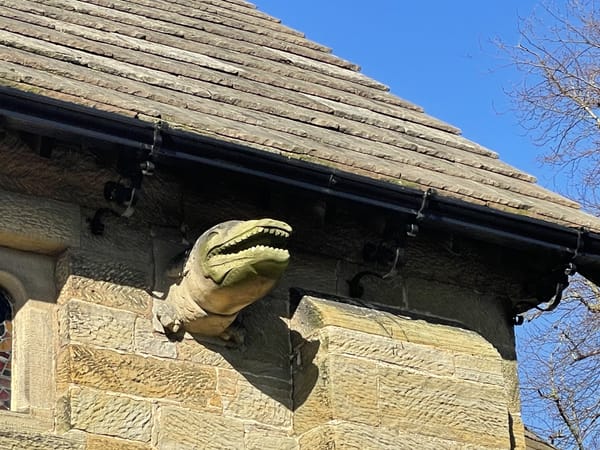"Let's ring our bells. Let's ring them from our churches, from the rooftops, from our houses. Let's ring them at the same time of day, every day until we are delivered from this. Ring them in our homes and businesses, from our balconies, our radios and our devices. Let's not muffle them this time, but ring them aloud with muffled hands and faces." #RingTheBells
I had a mental breakdown in my thirties. I found myself curled shrimp-like on the floor of my bedroom. The road to recovery was long and difficult, but it led to my career as a photographer. During my recuperation, a therapist gave me some valuable advice: that my breakdown was a shared experience - others had been through it. The thought helped lighten the burden, I felt as though I wasn’t on my own.

The medicinal concoction that took me away from the darkness was an infusion of photography and architecture. Along the way I discovered a mind soothing poultice in photographing churches. I’m not religious, so I’ve often wondered why.

Whilst a photograph can hint at time’s passage, churches press the grubby nose of the past right up to the present. Whereas photographs can halt time’s procession, churches suck it in with an imperceptible hoarding of time. In these sacred nooks a gathering takes place. It’s here that an ocean of generations comes to shore - the monuments, inscriptions, and carvings; the rood, encaustic and vaulting - washed up like driftwood.


John Betjeman called them mothering spires. They are places that have sheltered the trials and tribulations of communities for thousands of years. When I visit, the shared experience of the present and past are in alignment. Current troubles evaporate in these structural expressions of former times. It’s a collated wisdom that manifests in a sense of feeling grounded. Our forebears have been through what we’re going through now - and they survived. These places hold their secrets and are saturated with meaning. They are tachographs of the human condition.

Churches are places that listen and places that tell.

Their presence speaks of survival and continuity.



They are places of thought and contemplation, of memory and compassion, of myth and mystery, of bone and flesh, of art and craft, of song and dance, of fabric and weave, of texture and colour, of the singular and the plural, of discrimination and diversity, of fallibility and strength, of the physical and the spiritual, of sadness and of the humours, of sickness and healing - of sound.

In medieval times, people found refuge by seeking a sanctuary knocker on the door of a church. Perhaps now, more than ever, these buildings have the potential to become sanctuaries for the mind. To draw from their experience as well as our own; to heal, soothe and place our times into perspective.


On my last visit to a church, I spent some time photographing the bells. They were on a turret on the gable of a church that's not in regular use. I felt as though I was photographing something for posterity, an old set of bells that would be a novelty for our modern age. How wrong I was.
Whilst the songs of humanity ring out from Wuhan and Rome, we have at our disposal a sound so powerful, within living memory, that it could have more reach than any virus. I'm told that our bells signify a sense of belonging, an audible marker of a community. What would it mean for those that are isolated in body and in mind to hear them everyday until this crisis is over?

My therapist told me that easing my mental burden would help boost my immunity. The thought that our churches might be able to contribute to our national wellbeing is heart warming.

Let's ring our bells. Let's ring them from our churches, from the rooftops, from our houses. Let's ring them at the same time of day, every day until we are delivered from this. Ring them in our homes and businesses, from our balconies, our radios and our devices. Let's not muffle them this time, but ring them aloud with muffled hands and faces.
When people look back a thousand years from now, our churches may be the only buildings that have seen our story. They will have memorials on the walls from these times; and if they ring a single seed of hope that feeds into the future, they will have passed on our meaning.
#RingTheBells

Most of the places in this photo story are looked after by the Churches Conservation Trust or The Friends of Friendless Churches. Their websites have all the information you need to find sanctuary.

Andy Marshall
is an architectural photographer based in the UK.

Churches in order of appearance: St. Michael and All Angels Gwernesney, St. Mary of the Angels Brownshill, Peterborough Cathedral, St. John the Baptist Inglesham, St. Michael’s Upton Cressett, All Saints’ Spetchley, St. Michael’s Upton Cressett, All Saints’ Kedleston, St. Kenelm’s Sapperton, All Saints’ Harewood, St. Edmund’s Falinge, St. Mary’s Temple Corsley, All Saints’, Nuneham Courtney, St. Mary's Temple Corsley, St. Michael and All Angels Gwernesney, St. Anno’s, Llananno, Holy Trinity Goodramgate York.







Member discussion